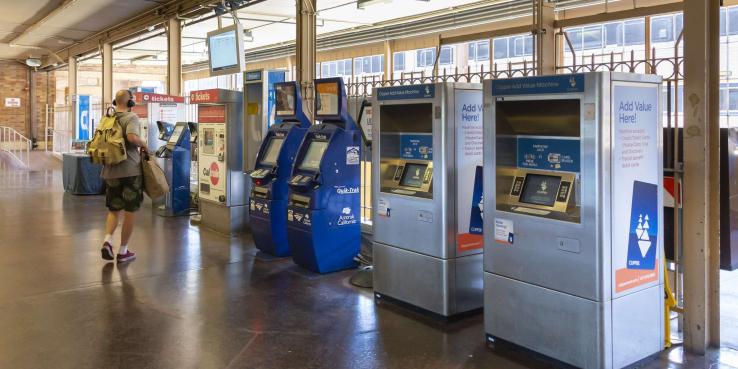What will it take to transform transit in the Bay Area? Last year, the Metropolitan Transportation Commission (MTC) launched its first-ever Transformative Transportation Projects competition. The agency put out a call to the public, nonprofits and businesses for bold new ideas to inform its long-range planning process. MTC received over 400 submissions and identified 12 finalists. The results are in, are we are thrilled to share that integrated transit fares — a proposal from SPUR, Seamless Bay Area and others — rose to the top as not only the most transformative of the 11 finalists but one of the highest-performing projects overall.
MTC evaluated the competition submissions as part of its Project Performance Assessment (PPA), which models the costs and benefits of different transportation projects in 2050 and includes an equity assessment to identify the distribution of benefits by income level and geography. MTC uses the findings from the assessment and other inputs to determine which projects to include in Plan Bay Area, the region’s long-range plan, and recommend for funding.
The PPA found that integrating fares across the region’s many transit operators, with seamless connections between them, would be especially transformative.
Currently, each of the region’s more than two dozen transit operators sets its own fare policy, resulting in a hodgepodge of different fare structures, products, discounts and prices across the region. As SPUR has argued in our reports Seamless Transit and Solving the Bay Area’s Fare Policy Problem, disparate and disjointed fares create customer confusion, inhibit people from using more than one transit service and undermine the benefits the region should derive from the significant investments it is making in new transit infrastructure and technology. The region’s fragmented approach to fares pushes people to make inefficient and often costly transit decisions — or to get behind the wheel and drive, adding to traffic congestion, pollution and carbon emissions.
According to the PPA results, not only is fare integration very cost-effective, it advances equity by yielding disproportionately high benefits for lower-income residents. The PPA further found that because integrating transit fares would attract hundreds of thousands of new daily transit riders, it’s a revenue neutral strategy. MTC is recommending that integrated fares be included in Plan Bay Area 2050, which has traditionally focused on building new capital projects rather than pursuing programs and policies to make the existing transit system function better.
This is one of several important victories for fare integration in the last year. MTC is in the process of launching a business case for fare integration — a SPUR recommendation — to identify the optimal integrated fare structure for the region and strategies for implementation. The business case is also prioritizing user research — a SPUR recommendation and a first for the region. Inspired by TransLink, Metro Vancouver’s transportation network, SPUR explored how to apply user research approaches to fare policy at our most recent Transit + Design workshop in June 2019. User research can identify what transit riders like and don’t like about the current fare system and help determine the priorities for a future coordinated regional fare system.
Transit agencies in the Bay Area have long considered customer experience improvements such as integrated fares, unified maps, intuitive station design and smooth transfers as “nice to haves.” What the results from the PPA demonstrate is that the customer experience matters. What riders pay for transit (and how they pay for it) are major components of their decision to take transit — or not. To transform transit in the region, customer experience must move from the fringes of what public transit agencies and their boards of directors focus on to become a primary activity. The better MTC and transit operators get at understanding, measuring and — crucially — accounting for the customer experience, the better position the region will be in to achieve a transit system that is attractive to riders and really works for their lives.
Transit in the Bay Area is going to work best when all the pieces fit together. The PPA demonstrated that integrating transit fares can transform transit. Doing so can significantly grow transit ridership and make transit more accessible to riders with low incomes. But aligning fares across multiple public transit operators will be complex and will require something else that cannot be analyzed through a model: leadership. The results of the PPA are tremendous. Now comes the hard work of actually implementing an integrated fare structure for the region.
